#restorize
Explore tagged Tumblr posts
Text
Restoring The Smallest Clockwork
58K notes
·
View notes
Text

In the cottage
#before they adopted their 4 children obv#jayvik so powerful it got me drawing agian#jayce Talis#Viktor Talis#yeah u heard me#idk how to draw them yet be gentle#Jayvik#jayvik fanart#misticarts#idk if Viktor would have his brace but in this headcanon Viktors body is restored to pre shimmer/hexcore/magic state an they r brace4brace
9K notes
·
View notes
Text
"In Northern California, a Native American tribe is celebrating the return of ancestral lands in one of the largest such transfers in the nation’s history.
Through a Dept. of the Interior initiative aiming to bring indigenous knowledge back into land management, 76 square miles east of the central stretch of the Klamath River has been returned to the Yurok tribe.
Sandwiched between the newly-freed Klamath and forested hillsides of evergreens, redwoods, and cottonwoods, Blue Creek is considered the crown jewel of these lands, though if it were a jewel it wouldn’t be blue, it would be a giant colorless diamond, such is the clarity of the water.

Pictured: Blue Creek
It’s the most important cold-water tributary of the Klamath River, and critical habitat for coho and Chinook salmon. Fished and hunted on since time immemorial by the Yurok and their ancestors, the land was taken from them during the gold rush before eventually being bought by timber companies.
Barry McCovey Jr., director of the Yurok Tribal Fisheries Department, remembers slipping past gates and dodging security along Blue Creek just to fish up a steelhead, one of three game fish that populate the river and need it to spawn.
Profiled along with the efforts of his tribe to secure the land for themselves and their posterity, he spoke to AP about the experience of seeing plans, made a decade ago, come to fruition, and returning to the creek on which he formerly trespassed as a land and fisheries manager.
“To go from when I was a kid and 20 years ago even, from being afraid to go out there to having it be back in tribal hands … is incredible,” he said.
Part of the agreement is that the Yurok Tribe would manage the land to a state of maximum health and resilience, and for that the tribe has big plans, including restoring native prairie, using fire to control understory growth, removing invasive species, restoring native fish habitat, and undoing decades of land-use changes from the logging industry in the form of culverts and logging roads.
“And maybe all that’s not going to be done in my lifetime,” said McCovey. “But that’s fine, because I’m not doing this for myself.”
The Yurok Tribe were recently at the center of the nation’s largest dam removal, a two decades-long campaign to remove a series of four hydroelectric dams along the Klamath River. Once the West Coast’s third-largest salmon run, the Klamath dams substantially reduced salmon activity.
Completed last September, the before and after photographs are stunning to witness. By late November, salmon had already returned far upriver to spawn, proving that instinctual information had remained intact even after a century of disconnect.

Pictured; Klamath River flows freely, after Copco-2 dam was removed in California
“Seeing salmon spawning above the former dams fills my heart,” said Joseph L. James, chairman of the Yurok Tribe, the leaders of the dam removal campaign along with the Karuk and Klamath tribes.
“Our salmon are coming home. Klamath Basin tribes fought for decades to make this day a reality because our future generations deserve to inherit a healthier river from the headwaters to the sea.”
Last March, GNN reported that the Yurok Tribe had also become the first of America’s tribal nations to co-manage land with the National Park Service under a historic memorandum of understanding involving Redwoods National Park.
The nonprofit Save the Redwoods bought a piece of land adjacent to the park, which receives 1 million visitors annually and is a UNESCO Natural Heritage Site, and handed it over to the Yurok for stewardship.
The piece of land, which contained giant redwoods, recovered to such an extent that the NPS has incorporated it into the Redwoods trail network, and the two agencies will cooperate in ensuring mutual flourishing between two properties and one ecosystem.
Back at Blue Creek, AP reports that work has already begun clearing non-native conifer trees planted for lumber. The trunks will be used to create log jams in the creek for wildlife habitat.
Costing $56 million, the land was bought from the loggers by Western Rivers Conservancy, using a mixture of fundraising efforts including private capital, low interest loans, tax credits, public grants and carbon credit sales.
The sale was part of a movement called Land Back, which involves returning ownership of once-native lands of great importance to tribes for the sake of effective stewardship. [Note: This is a weirdly limited definition of Land Back. Land Back means RETURN STOLEN LAND, PERIOD.] Studies have shown around the tropics that indigenous-owned lands in protected areas have higher forest integrity and biodiversity than those owned by national governments.
Land Back has seen 4,700 square miles—equivalent to one and a half-times the size of Yellowstone National Park—returned to tribes through land buy-back agreements in 15 states." [Note: Since land buyback agreements aren't the only form of Land Back, the total is probably (hopefully) more than that.]
-via Good News Network, June 10, 2025
#indigenous#first nations#native american#yurok#united states#north america#california#land back#landback#salmon#endangered species#conservation#ecosystem restoration#rivers#damns#klamath river
7K notes
·
View notes
Text

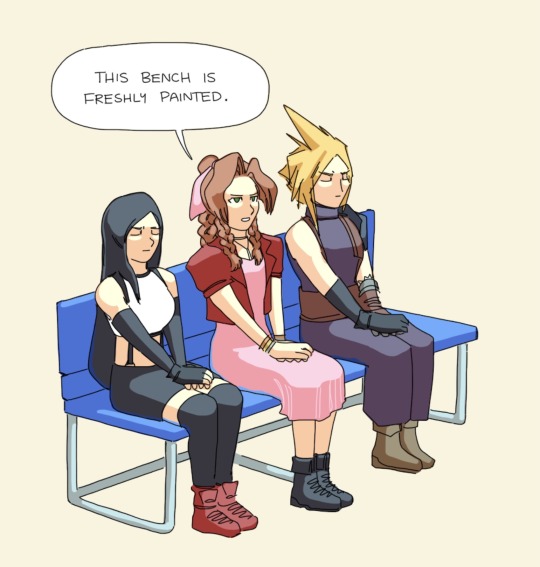
yeah thanks for the heads up
#prank'd. lol#shout out to my best friend the pretty blue benches of health restoration in remake#ffvii#cloud strife#tifa lockhart#aerith gainsborough#my art <3
5K notes
·
View notes
Text
A caveat to this study: the researchers were primarily looking at insect pollinator biodiversity. Planting a few native wildflowers in your garden will not suddenly cause unusual megafauna from the surrounding hinterlands to crowd onto your porch.
That being said, this study backs up Douglas Tallamy's optimistic vision of Homegrown National Park, which calls for people in communities of all sizes to dedicate some of their yard (or porch or balcony) to native plants. This creates a patchwork of microhabitats that can support more mobile insect life and other small beings, which is particularly crucial in areas where habitat fragmentation is severe. This patchwork can create migration corridors, at least for smaller, very mobile species, between larger areas of habitat that were previously cut off from each other.
It may not seem like much to have a few pots of native flowers on your tiny little balcony compared to someone who can rewild acres of land, but it makes more of a difference than you may realize. You may just be creating a place where a pollinating insect flying by can get some nectar, or lay her eggs. Moreover, by planting native species you're showing your neighbors these plants can be just as beautiful as non-native ornamentals, and they may follow suit.
In a time when habitat loss is the single biggest cause of species endangerment and extinction, every bit of native habitat restored makes a difference.
#nature#wildlife#animals#ecology#environment#conservation#science#scicomm#pollinators#bees#butterflies#hoverflies#insects#native plants#habitat restoration#solarpunk#hopepunk#naturecore#wildflowers#good news
6K notes
·
View notes
Text
“Good luck. And DON’T fuck it up.”
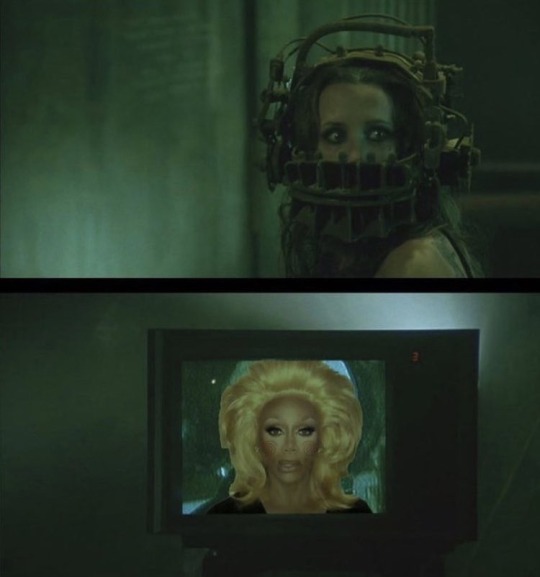
#just to clarify I didn’t make this edit. this is an old tumblr post that the website made inaccessible for some reason. so I recreated it#it’s smth of a historic restoration effort with saw heritage posts. check their addition (also part of the original post)#loutown#saw
44K notes
·
View notes
Text
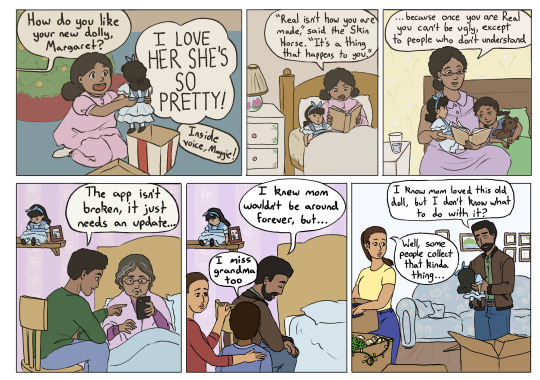
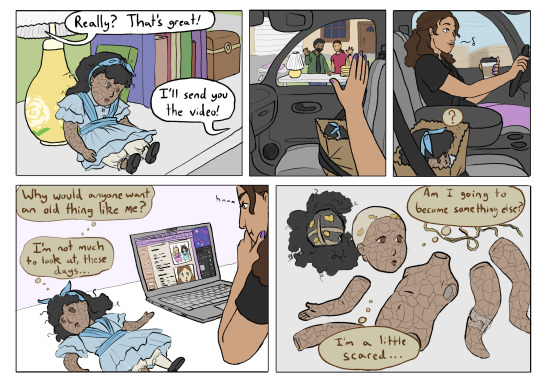
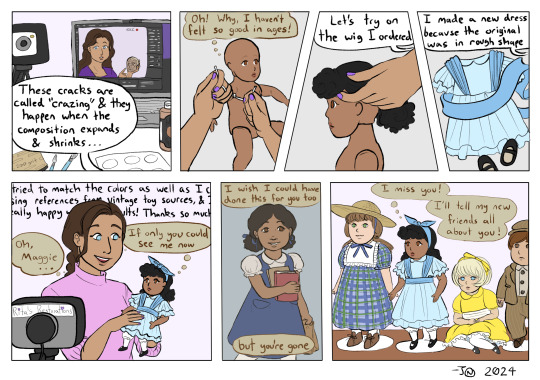
I meant to draw this back when I did this other doll comic as another side, to show a doll that had been cared for instead of abused, but somehow I wasn't able to finish it till like 10 minutes ago, anyway I did it *confetti*
#nardacci art#doll restoration#comic#I had the thumbnail sketches for the panel layouts in my files for like years#I've had the notes on my desktop since uuuhhh#wow 2020 I guess????? that's when I posted the cursed doll comic OTL#I have 1 more to do so maybe I'll get that one done by 20 freaking 28
26K notes
·
View notes
Text
So I was recently tasked with a very well loved soft toy Flip the Frog from the 1930s to restore.

He was bought new for my great aunt-in-law when she was 10, and was gifted to her sister's children when they were young. My mother in law has memories of feeding him cornflakes and putting her hands in his mouth, which felt very soft and velvety.
He had been in the attic for a number of years, and had moths get to him. He had lost his eyes. Luckily there are some examples online which show what he was meant to be like!

I approached this project wanting to retain as much of the original plush as I could. I thought about doing a total restoration, but I would end up replacing so much I might as well be making a replica! I wanted to make sure I used fabrics that were sympathetic to the time period, so 100% wool felt and cotton velvet seemed appropriate. The only liberty I took was polyester thread, because that's what I had already.

I researched a lot of plush restorations and best practices. A lot of places recommended only surface washing, but poor Flip was so full of dust and the remains of moths, but his fabric body seemed rather sturdy still, I thought I would take the risk of un-stuffing him to give him a thorough bath. I very gently took him apart and unstuffed him. His stuffing material looked to be kapok. There was lots of moth poop.

I gave Flip a gentle bath with carpet cleaning solution, which is what is recommended for vintage plushies. It's designed to be used on lots of fabrics including natural ones like wool and doesn't leave a residue once it's done cleaning so won't degrade the fabric over time. Loads of grime came out of Flip, as well as some yellow dye from his feet.

Flip then had a good air-dry in the sun. He seemed to enjoy soaking up the sun, he was already looking a lot cleaner.


Flip's eyes (which once upon a time caused my cousin-in-laws nightmares) were particularly gross and moth-eaten underneath. I decided to re-cover the card disks that made up his eyes with velvet cotton instead rather than reuse the old eyes. His original velvet was really bright yellow but had faded over time. I decided to use a fabric that matched his more faded look, I felt the bright yellow would look out of place. I also got some wooden beads and cut them in half and painted them for his pupils, which I glued on.

When it came to restoring his feet, I tried to retain as much of the original material as possible. I enjoyed patching and repairing the felt, I chose a 100% wool yellow felt that was close to his old colour here. Highlights the age of the old parts, I feel like it draws attention to his history and age.

Time to put him back together! I bought some new kapok stuffing because I couldn't reuse the old dusty moth stuff. Luckily you can still get it. I wrapped his metal skeleton in felt so that if it got rusty it wouldn't stain him (he's already a little stained from it rusting). Then I slipped his limbs over the skeleton and sewed them back on!

Ta-daa!! Here's flip looking a lot better, even if I say so myself.
One of the things we noticed when looking at photos of these soft toys is that they seem to have pinkish or white bow-ties and this Flip was missing his! Looking at the character art, I believe they were originally red.
The orientation of the eyes also seems to vary because I think they were prone to falling off and being sewn back on. I chose to orient Flip's eyes close to how they were when I received him, but slightly more vertical to make him appear more friendly.
Flip was a very fun challenge and got me thinking a lot about restoration vs conservation of historical artifacts, he may not be super duper old or rare but I feel like I better understand the dilemmas and judgements that have to be made when working on objects like this!
3K notes
·
View notes
Text
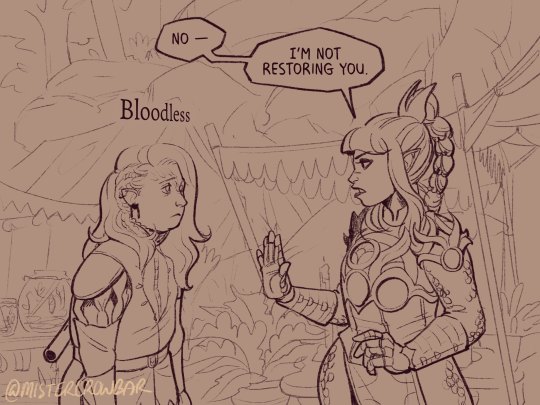
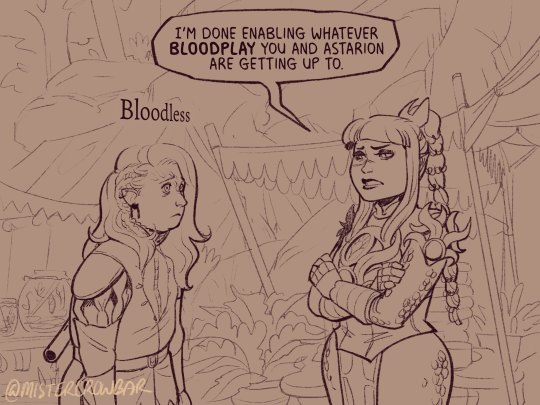
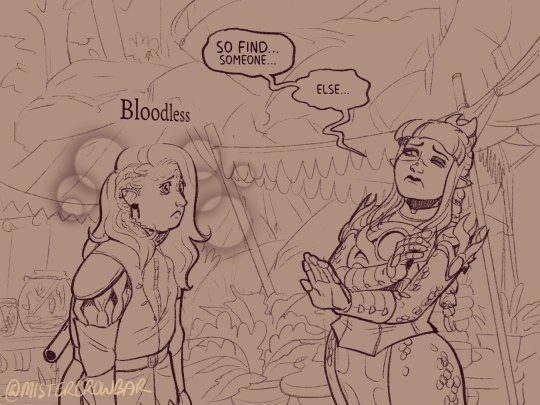
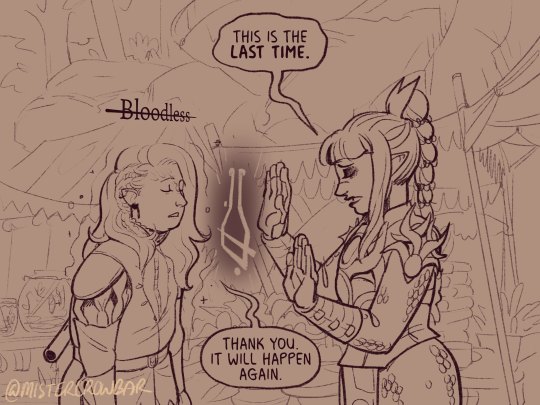
Sorry not sorry Shadowheart, from every Astarion romancer ever.
#bg3#bg3 fanart#baldur's gate 3#shadowheart#c:aldiirn#sketch#doodle comic#crowbart#i know about the amulet in the grove#and aldiirn did learn lesser resto for himself later#so playthru 1 i relied on sheart for restoring him#and because i didnt want to use her in the main party there was this whole ritual of dismissing someone#adding her#having her cast the spell only to tell her to stay in camp again right after#the olden days before swapping was made easier#it was so tedious lol
11K notes
·
View notes
Text

Chevrolet Camaro ( 1970 ) 😎

#chevrolet#muscle cars#american cars#car#cars#automobile#automobiles#cool cars#cool automobiles#nice cars#nice car#automobile photography#automobile images#automobile pictures#car images#car pictures#pictures of cars#images of cars#car enthusiasts#love cars#classic cars#classic american cars#v8#sports cars#70s cars#70s automobiles#camaro#classic camaro#classic car#restored cars
2K notes
·
View notes
Text





We live under a dictatorship of billionaires with daddy issues and colonizer fever dreams x
#karina garcia#claudia de la cruz#our world#politics#ecosystem of white supremacy#down with capitalism#elon musk#eat the rich#restore our resources#shut down
3K notes
·
View notes
Text
"A tribal-led nonprofit is creating a network of native bison ranchers that are restoring ecosystems on the Great Plains, restoring native ranchers’ connections with their ancestral land, and restoring the native diet that their ancestors relied on.
Called the Tanka Fund, they coordinate donors and partners to help ranchers secure grazing land access, funds needed to install and repair fencing, increase their herd sizes, and access markets for bison meat across the country.
That’s the human part of the story. But as Dawn Sherman, executive director of the Tanka Fund, told Native Sun News, they’re “buffalo people” and these four-legged, 2,000 lbs. “cousins” are equal-part-protagonists.
The return of the bison means the return of the prairie, one of the three great grassland ecosystems on the planet, of which just 1% remains as it was when the Mayflower arrived.
“Bringing buffalo back to their ancestral homelands is essential to restoring the ecosystem. We know that the buffalo is a keystone species,” said Dawn Sherman, a member of the Lakota, Delaware, Shawnee, and Cree.
“Bringing the buffalo back to the land and to our people, helps restore the ecosystem and everything it supports from the animals to the plants to the people. It’s come full circle. That’s how we see it.”
As Sherman and the Tanka Fund help native ranchers grow their operations, everyone is well aware of the power of the bison to transform the environment: just as nations across Europe are, who are reintroducing wood bison to various ecosystems, for all the same reasons.
Sherman points out the variety of ways in which buffalo anchor the prairie ecosystem. The almost-extinct black-footed ferret, she points out, lived symbiotically with the bison, and with the latter gone, the former followed—nearly.
The long-billed curlew uses bison dung as a disguise to hide nests from predators. Deer, pronghorn antelope, and elk all rely on bison to plow through deep snows and uncover the grasses that these smaller animals can’t reach.
Everywhere the bison hurls its massive body, life springs in the beast’s wake. When bison roll about on the plains, it creates depressions known as wallows. These fill with rainwater and create enormous puddles where amphibians and insects thrive and reproduce. Certain plants evolved to grow in the wet conditions of the wallows which Native Americans harvested for food and medicine.
Native plants evolved under the trampling hooves of millions of bison, and that constant tamping down of the Earth is a key necessity in the spreading of native wildflower seed.
Indeed, Sherman says some of these native ranchers are bringing bison onto lands still visibly affected by the Dust Bowl, and already the animals are acting like a giant wooly cure-all for the land’s ills.
Since 2020, the Tanka Fund, in partnership with the Inter-Tribal Buffalo Council and the Nature Conservancy, has overseen the transfer of 2,300 bison from Nature Conservancy reserves to lands managed by ranchers within the Tanka Fund network.
“[T]he more animals that we can get the more of that prairie we can restore,” said Sherman. “We can help restore the land that has been plowed and has been leased out to cattle ranchers.”"
youtube
-Article via Good News Network, February 13, 2025. Video via Tanka Fund, July 17, 2024.
#indigenous#indigenous peoples#first nations#native americans#bison#ecology#ecosystem#ecosystem restoration#keystone species#endangered species#environment#prairie#great plains#land back#good news#hope#Youtube
15K notes
·
View notes
Text


"He spoke not a word as he died. Not a whisper. Even in death, he mocked me with his silence!"
-Please do not reupload/edit/use without proper credit or linking back. Preferably ask first.-
#almalexia#ayem#morrowind#tes#tesblr#almsivi#tes iii#tes3#tes 3#the tribunal#artsyfartsyness#Your eyes really start swimming when you try to work on details on something this huge#wild#digital mosaic#The background is supposed to be an artsy version of the chamber and the wires Sota Sil is dangling from btw#it became very hard to see in the name of stylin#Someone is next and it's probably Voryn bc I like the idea of the Sixth House trying to restore a damaged mosaic of him that was either#uncovered or taken and partially destroyed by one of the other houses#Either that or it's Seht or Nerevar#but I might do a daedra instead
3K notes
·
View notes
Text
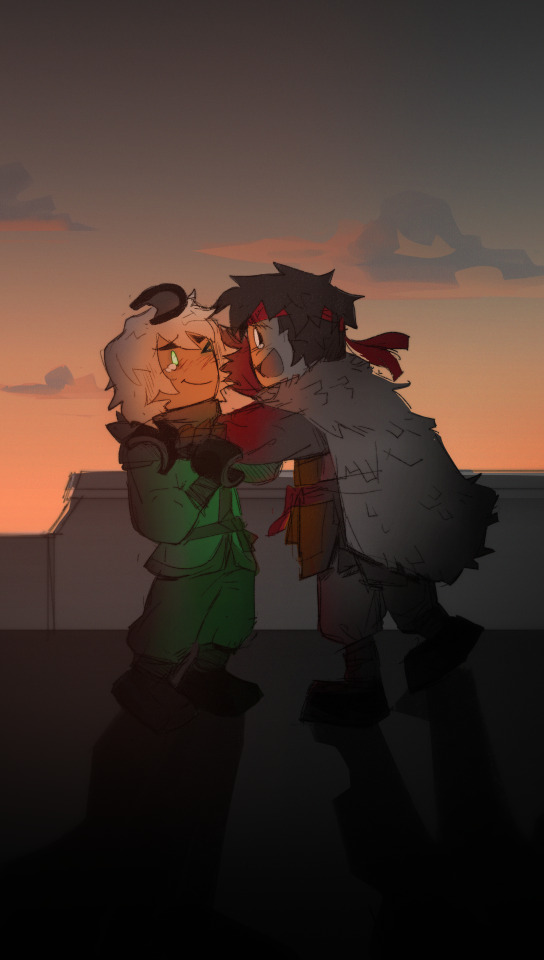
and then it all faded back into color
#'it's so good to see you buddy' i'm sure it is kai.. really sure it is#doodles#my art#lego ninjago#kai ninjago#lloyd garmadon#ninjago monstrosity#the red in the sunrise at the end of the shorts was nice#the greyscale world gaining color again bc hope is restored#ive been meaning to draw something like this but in a different composition but i already started doodling the hug :P#knowing that this is what happens in the end .🥺 RG duo stays winning. to me
2K notes
·
View notes
Text
screaming crying and falling to my knees because a show for little girls made to empower girls and centering around a girl and being a silly entertaining power fantasy for girls has a trend of empowering girls more often than it empowers boys. i slam my fists into the concrete and throw my head back, crying to the sky “WHAT SORT OF FEMINISM IS THIS?” as cars whir past and the sun continues to shine, somehow oblivious to this plight of men
2K notes
·
View notes